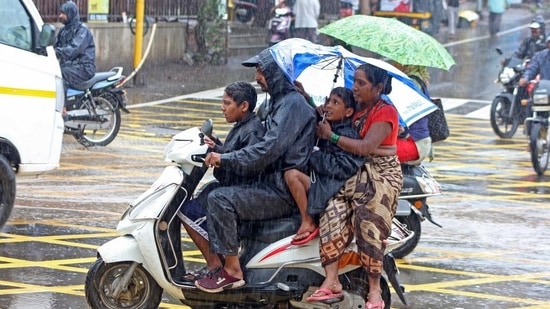Men should be equal partners in family planning
The article is authored by Ashutosh Kaushik, CEO, Foundation for Reproductive Health Services (FRHS), India.
In a country like India, where men are hesitant to undergo vasectomies or use condoms, the responsibility of family planning rests solely on the women. Data shows that only 3% of all 51.6 million sterilisations that took place in India between 2008 and 2019 were vasectomies, clearly highlighting the situation of women who are at the receiving end of bearing the entire family planning burden. And at most times not realising that sterilisation is a permanent process, and not reversible and in violation of their reproductive rights.

For most women, particularly belonging to the rural and semi-urban belts of India there’s no freedom of choice, or access to contraception primarily as they are inadequately informed or completely informed because of illiteracy. According to 2011 Census, the overall male literacy in India was 80.89% whereas women literacy rate was just 64.64%, and this situation gets worse in certain states like Uttar Pradesh (63.4%) and Bihar (53.57%). This lack of education and hence empowerment coupled with poverty forces to opt for tubal ligations as the only way to practise family planning.
Another big challenge encountered by the poor, uneducated or tribal women is often that of consent. Several vulnerable women are often forced into surgeries or misinformed about the surgery and its possible after effects, leading to limited choices. Population Research Institute had conducted a study which found that one of three women had not given informed consent before they underwent sterilisation. They were not made aware of the side-effects of the procedure, which included them not being informed about irreversibility of the surgery.
National Family Health Survey (NFHS)-5 data shows 37.9% of women use sterilisation or tubal ligations to check unwanted pregnancies, which is way higher that than the safer and non-surgical options like pills (5.1 per cent), injectables (0.6%), condoms (9.5%), IUDs (2.1%) or male sterilisations or vasectomies (0.3%). The data also highlights that almost 75% of all female sterilisations take place in public hospitals or government run camps, and roughly one-third of them are done post-partum.
Observations from another report published by the National Health Mission stated: “Women continue to bear an uneven burden of the terminal methods of family planning and sterilisation.” As per Health Management Information Systems. (HMIS) in 2017-18 (till October) of the total 14,73,418 sterilisation procedures only 6.8% were male sterilisation while 93.1% were female sterilisation.
There is historical evidence to this continuing imbalance between male and female sterilisations dating back to the Family Planning Programme launched during the 1975 Emergency period in India when almost 6.2 million coerced male sterilisations were conducted in a year, inviting mass protests and public ire. This episode not only led to widespread and deep-rooted stigmatisation and misinformation regarding vasectomies but also led to the lopsidedness in sterilisation balance which majorly tilts towards female sterilisations. But having said that, there is no reason why the government should not make definitive attempts to break away from the past and create awareness where they make a case for vasectomies for family planning as they are not just safer but also non-invasive in nature.
While the government has over the recent years introduced programmes like Hum Dono to create awareness on family planning methods among newly married couples and Mission Parivar Vikas (2016) for enhancing and improving access to contraceptives across 145 high-fertility districts in Bihar, Uttar Pradesh, Rajasthan, Madhya Pradesh, Chhattisgarh, Assam, Jharkhand and later extending it to the six north-eastern states (2021) to increase dependence on non-surgical and reversible contraceptives but it is still to reach the end users and find favour among the masses. The NFHS-5 data bears testimony to the same, where the total use of non-surgical options of contraceptives was way lower than female sterilisations.
The ministry and health and family welfare (MoHFW) campaign to generate contraceptive demand and a scheme for doorstep delivery of contraceptives by Accredited Social Health Activists (ASHA) workers was also a well-thought-out plan but it is also still to find acceptability among the target beneficiaries.
While the government can continue to create plans and campaigns to raise awareness on uptake of alternate contraceptives, but it is importance to run parallel drives and counselling around safety and efficacy of these methods. It is importance to create knowledge and awareness around the other non-surgical contraceptives and bridge the existing trust deficit between genders.
It is imperative for the government to proactively involve the men in the reproductive health conversation. While large-scale, media-led campaigns may help to a certain extent but there should be a focus on one-on-one counselling, more hand holding and more awareness to dispel fears around vasectomy and other non-surgical methods of contraception including condoms. It is important to involve men to take a role in sharing the contraceptive burden. Currently, 75.4% of married men in India use no method of contraception, as per the National Family Health Survey. It is equally important for men to take care of contraceptive issues.
While the ultimate aim is to stabilise the population in India, but there are many awareness-led programmes which needs to be leveraged to give access to the required information to empower women to take right decisions, both for themselves and their families.
(The article is authored by Ashutosh Kaushik, CEO, Foundation for Reproductive Health Services (FRHS), India.)



